 W
WA hussar was a member of a class of light cavalry, originating in Central Europe during the 15th and 16th centuries. The title and distinctive dress of these horsemen were subsequently widely adopted by light cavalry regiments in European armies in the late 17th and early 18th centuries.
 W
WThe 1st Hussars is an armoured Primary Reserve regiment of the Canadian Armed Forces, based in London and Sarnia, Ontario.
 W
WThe 2nd Pavlograd Life Hussar Regiment was a cavalry regiment of the Imperial Russian Army.
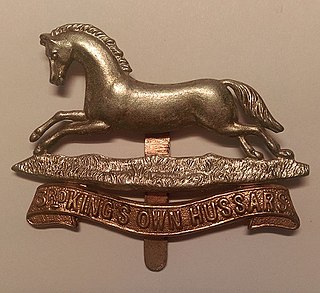 W
WThe 3rd Hussars was a cavalry regiment of the British Army, first raised in 1685. It saw service for three centuries, including the First World War and the Second World War, before being amalgamated with the 7th Queen's Own Hussars, to form the Queen's Own Hussars in November 1958.
 W
WThe 4th Princess Louise Dragoon Guards is an inactive armoured regiment of the Canadian Militia / Canadian Army. It is currently on the Supplementary Order of Battle.
 W
WThe 4th Princess Louise Dragoon Guards is an inactive armoured regiment of the Canadian Militia / Canadian Army. It is currently on the Supplementary Order of Battle.
 W
WThe Royal Canadian Hussars (Montreal) is an armoured reconnaissance regiment of the Primary Reserve in the Canadian Armed Forces. It is one of the oldest cavalry regiments in North America, tracing a direct history to the Montreal Volunteer Cavalry formed in the late eighteenth century. Its Colonel-in-Chief is Her Royal Highness, the Princess Royal, and its allied regiment is the Queen's Royal Hussars. Its mission consists of supporting the Regular Force in operational deployments, peacetime tasks, and supporting the civilian authorities.
 W
WThe Sherbrooke Hussars is a Primary Reserve armoured regiment of the Canadian Forces and perpetuates the Sherbrooke Fusilier Regiment of the Second World War.
 W
WThe 8th Canadian Hussars is an armoured regiment in the Canadian Army. It was formed on the 4 April 1848 in New Brunswick where it has served continually ever since. Today it is a reserve armoured reconnaissance regiment with two squadrons. Its Regimental Headquarters (RHQ) and A Squadron are located in Moncton with B Squadron located in Sussex, New Brunswick.
 W
WThe 8th Canadian Hussars is an armoured regiment in the Canadian Army. It was formed on the 4 April 1848 in New Brunswick where it has served continually ever since. Today it is a reserve armoured reconnaissance regiment with two squadrons. Its Regimental Headquarters (RHQ) and A Squadron are located in Moncton with B Squadron located in Sussex, New Brunswick.
 W
WThe 10th (Magdeburg) Hussars Regiment (German: Magdeburgisches Husaren-Regiment Nr. 10) were a Prussian Light cavalry regiment of the IV Corps that was formed in late 1813 during the War of the Sixth Coalition against Napoleon after the Battle of Leipzig. The Hussars were a distinctively dressed light cavalry of East European origin. The 10th Hussars were stationed from 1814 to 1884 in Aschersleben and after 1884 in Stendal. They fought in 1866 at the Battle of Königgrätz and later in World War I.
 W
WThe 10th Queen's Own Canadian Hussars (QOCH) was a cavalry regiment of the Non-Permanent Active Militia which existed between 1856–1913 and 1928–1936.
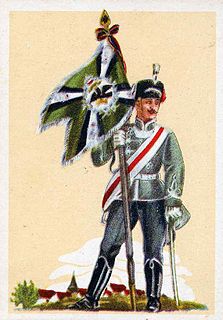 W
WThe 11th Hussar Regiment, initially called the 2nd Westphalian Regiment, was a notable cavalry unit of the Royal Prussian Army and the German Imperial Army.
 W
WThe Sherbrooke Hussars is a Primary Reserve armoured regiment of the Canadian Forces and perpetuates the Sherbrooke Fusilier Regiment of the Second World War.
 W
WThe 16th (Schleswig-Holstein) Hussars “Emperor Francis Joseph of Austria, King of Hungary” were a cavalry regiment of the Royal Prussian Army. The regiment was formed in 1866. It fought in the Franco-Prussian war and World War I. In 1872 it was named after Emperor Francis Joseph I of Austria, who became its colonel-in-chief. The regiment was stationed in Gottorf Castle until its disbanding in 1918.
 W
WThe Royal Canadian Hussars (Montreal) is an armoured reconnaissance regiment of the Primary Reserve in the Canadian Armed Forces. It is one of the oldest cavalry regiments in North America, tracing a direct history to the Montreal Volunteer Cavalry formed in the late eighteenth century. Its Colonel-in-Chief is Her Royal Highness, the Princess Royal, and its allied regiment is the Queen's Royal Hussars. Its mission consists of supporting the Regular Force in operational deployments, peacetime tasks, and supporting the civilian authorities.
 W
WThe 19th Alberta Dragoons was a former cavalry regiment and later armoured regiment of the Canadian Militia and later the Canadian Army. It was placed on the Supplementary Order of Battle in 1965. In 2006, it was taken off the Supplementary Order of Battle and Amalgamated with the South Alberta Light Horse.
 W
WA barrel sash, also called a rope-and-barrel sash, is a form of belt traditionally worn by military units known as hussars as well as by bag pipers. It comprises a series of cords which are threaded through tubular metal "barrels" and worn around the waist. The tassels sometimes seen hanging from this garment are the ends of cords which come from around the back of the wearer.
 W
WIlie V. Cătărău was a Bessarabian-born political adventurer, soldier and spy, who spent parts of his life in Romania. Leading a secretive life, he is widely held to have been the main perpetrator of two bomb attacks, which sought to exacerbate tensions between Romania and Austria-Hungary in preparation for World War I. Beyond his cover as a refugee from the Russian Empire, Ilie Cătărău was a double agent, working for both Russian and Romanian interests.
 W
WDenis Vasilyevich Davydov was a Russian soldier-poet of the Napoleonic Wars who invented the genre of hussar poetry, characterised by hedonism and bravado. He used events from his own life to illustrate such poetry. He suggested and pioneered successfully guerrilla warfare in the Patriotic War of 1812 against Napoleon.
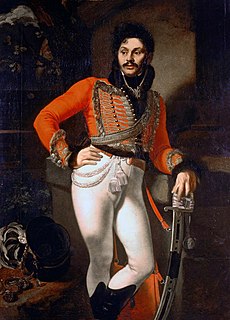 W
WEvgraf Vladimirovich Davydov was a major-general of the Russian Empire, who served in the era of the Napoleonic Wars. Davydov fought in the War of the Fourth Coalition, the War of the Fifth Coalition, and the War of the Sixth Coalition, losing a limb during the Battle of Leipzig, but nonetheless remaining in military service until his death.
 W
WAlexander Ivanovich Dmitriev-Mamonov was the commander of a Belarusian Hussar regiment and a battle painter.
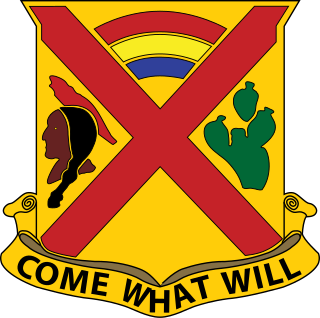 W
WThe Georgia Hussars are a cavalry unit founded before the American Revolution that continues today as part of the Georgia National Guard. The Hussars served the State of Georgia as part of the Confederate States Army during the American Civil War, and after reconciliation served in Mexico, World War I, World War II, Korea, Vietnam, Desert Storm, Bosnia and Herzegovina, and The War on Terror.
 W
WIllarion Illarionovich Vasilchikov was an Imperial Russian general. He was the son of Illarion Vasilyevich Vasilchikov and Vera Vasilchikova. He was the father of Sergei Vasilchikov. One of his daughters married Alexander Meyendorf. He was a recipient of the Order of Saint Alexander Nevsky, the Order of Saint Anna, the Order of Saint Vladimir and the Order of the White Eagle. He is buried at Kiev Pechersk Lavra in Ukraine.
 W
WTogether with the Dragoons and Uhlans, the Imperial and Royal Hussars, made up the cavalry of the Austro-Hungarian Army from 1867 to 1918, both in the Common Army and in the Hungarian Landwehr, where they were known as the Royal Hungarian Hussars.
 W
WVikentije Jovanović was the Serbian Orthodox Metropolitan of Belgrade and Karlovci from 1731 to 1737, as Vikentije II. During his diplomatic mission in Vienna in 1734, he was given permission by Emperor Charles VI to establish a hussar regiment constituted solely of Serbs and Croats. It was officially named Illyrian-Rascian regiment and inaugurated on June 16, 1735, in a grand ceremony officiated by Vikentije. The ceremony took place outside Budim where the banners which were used symbolized his importance in the Austrian Empire, but also the dual symbolism of East and West; dual coats of arms on their spears, two languages in their inscriptions, and the use of Eastern iconography and Western emblematic imagery. Vikentije's hussars went on to fight in the Austro-Russian–Turkish War (1735-1739).
 W
WYakov Petrovich Kulnev was, along with Pyotr Bagration and Aleksey Yermolov, one of the most popular Russian military leaders at the time of the Napoleonic Wars. Suvorov's admirer and participant of 55 battles, he lost his life during Napoleon's invasion of Russia.
 W
WMária Lebstück, was a Hussar officer during the Hungarian War of Independence of 1848 and 1849 under the name Károly Lebstück. She was the first woman to have been officer of the Hussar.
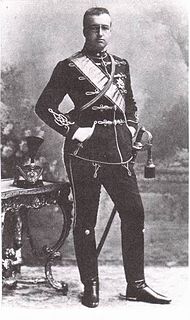 W
WPrince Leopold Clement Philipp August Maria of Saxe-Coburg and Gotha was an Austro-Hungarian officer and the heir apparent to the wealth of the House of Koháry. His death in a murder–suicide shocked the royal courts of Austria and Germany.
 W
WPrince Valerian Grigoryevich Madatov was a Russian-Armenian prince and a lieutenant-general of the Russian Empire.
 W
WCount Joseph Cornelius O'Rourke (1772–1849) was a Russian nobleman of Irish ancestry. He was a military leader who fought in the Napoleonic Wars and achieved the rank of lieutenant general; he is noted in present-day Serbia, where he led a combined Russian and Serb army to defeat the Turks at Varvarin in 1810.
 W
WPeter Johann Christoph Graf von der Pahlen was a Baltic German aristocrat and a general of the Imperial Russian Army.
 W
WThe 1st Parachute Hussar Regiment is an airborne cavalry unit in the French Army, founded in 1720 by Hungarian noble Ladislas Ignace de Bercheny. It is stationed in Tarbes and is a part of the 11th Parachute Brigade.
 W
WThe Queen's Royal Hussars (QRH) is a United Kingdom armoured regiment. It was formed on 1 September 1993 from the amalgamation of the Queen's Own Hussars and the Queen's Royal Irish Hussars. The regiment and its antecedents have been awarded 172 Battle Honours and eight Victoria Crosses. The regiment was based in Sennelager, Germany, until 2019 when it was relocated to Tidworth Camp, England. It is the armoured regiment for 20th Armoured Brigade.
 W
WThe Royal Canadian Hussars (Montreal) is an armoured reconnaissance regiment of the Primary Reserve in the Canadian Armed Forces. It is one of the oldest cavalry regiments in North America, tracing a direct history to the Montreal Volunteer Cavalry formed in the late eighteenth century. Its Colonel-in-Chief is Her Royal Highness, the Princess Royal, and its allied regiment is the Queen's Royal Hussars. Its mission consists of supporting the Regular Force in operational deployments, peacetime tasks, and supporting the civilian authorities.
 W
WHussars were first recorded in Russia as groups of irregulars in the mid-17th century. Under Peter I this class of light cavalry began to serve as organized regiments on a semi-permanent basis since 1723 based on Serbian Hussars out of the Habsburg Monarchy. Hussar regiments remained a conscious element of the Imperial Russian Army until the Revolution of 1917.
 W
WThe Serbian Hussar Regiment was a military unit of the Russian Imperial Army which predominantly consisted of Serbian colonists to Russia.
 W
WJovan Šević or Ivan Šević was an 18th-century military officer of Serb origin. He reached the rank of lieutenant colonel in the Serb militia forces in the Pomorišje region, then in the Military Frontier of the Habsburg Monarchy. When it became obvious that privileges granted to Serb militiamen would be reduced or completely revoked after Pomorišje and Potisje lost their frontier status, Šević left Habsburg military service in 1750 and moved to Russia. At the end of 1752, he led the second wave of colonists who migrated from Pomorišje, Potisje and Slavonia to the Russian Empire where they settled the newly established administrative region of Slavo-Serbia at the beginning of 1753. To enable him to recruit more of his fellow officers, Šević was promoted to the rank of General by the Russian Empress, Elizabeth. He commanded a Serb Hussar Regiment consisting of the colonists he brought to Russia. After Šević's death, Slavo-Serbia was disestablished, and many of his descendants became notable military officers in the Russian Imperial Army. Over time, all the Serb colonists became assimilated. Miloš Crnjanski described the migration led by Šević in his most notable work, the novel Migrations.
 W
WThe Sherbrooke Hussars is a Primary Reserve armoured regiment of the Canadian Forces and perpetuates the Sherbrooke Fusilier Regiment of the Second World War.
 W
WLászló Skultéty was a hussar in the Kingdom of Hungary. He is most likely the longest serving soldier in history, as he served 81 years as a cavalryman before his retirement. He fought in 256 battles during 22 military campaigns, surviving the rule of four emperors.
 W
WPeter Tekeli (1720–1792) was a Russian general-in-chief of Serb origin. He achieved the highest rank among the Serbs who served in the Imperial Russian Army. He was born in a noble family of military tradition, whose men were officers of the Austrian army in the Military Frontier. Prior to his emigration to Russia in 1748, he fought as a young officer in the War of the Austrian Succession. Characterized by both courage and military cunning, he made a splendid career in Russia. He participated in the Seven Years' War, the first Russo-Turkish War (1768–1774), and the second Russo-Turkish War (1787–1792). Under his command, Zaporozhian Cossacks were disbanded and subjugated to the Imperial authority in 1775, without spilling a single drop of blood, for which he received the Order of St. Alexander Nevsky from Empress Catherine the Great. He retired in 1790, and died two years later in his mansion at Novomirgorod.
 W
WThe Zieten Hussars,, last designation: "Hussars Regiment 'von Zieten' (Brandenburg) No. 3", was a hussar regiment of the Prussian Army and later the Imperial German Army, founded in 1730 and named after its first Colonel, Hans Joachim von Zieten.